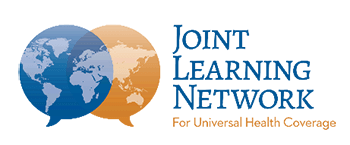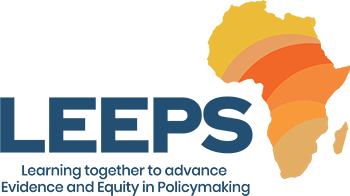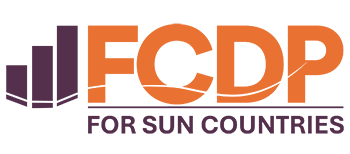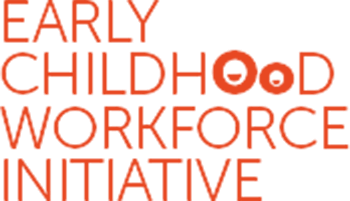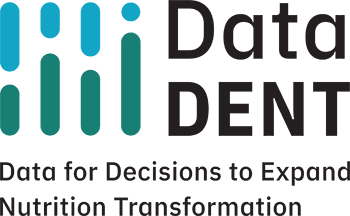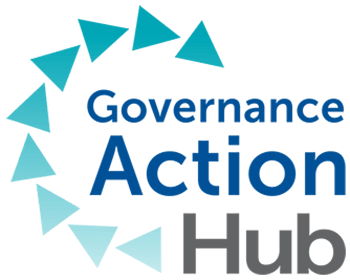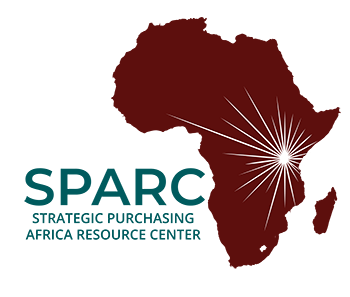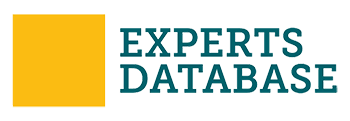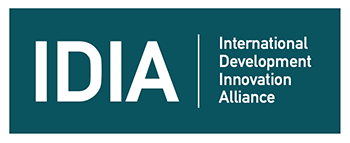It’s time to build a field for health commodity financing: Sustainable domestic systems to ensure access to essential medicines and products
Donor funding for essential medicines and products is declining fast. In response, countries are being asked to take on greater responsibility for financing and procurement. But many domestic systems aren’t yet ready to handle this transition.
Already, the cracks are showing. Fragile supply chains and shrinking domestic budgets are leading to stockpiling, rationing and shortages. Life-saving products like insecticide-treated nets for malaria prevention are failing to reach tens of millions. Critical maternal and child health and reproductive health products like oxytocin, misoprostol to prevent postpartum hemorrhage, and contraceptives are vanishing in some places.
But the problem is deeper than funding gaps or product shortages.
Ensuring that commodities for essential health services are available at scale requires governments to make complex, interconnected decisions across multiple sub-systems, each of which is typically governed by a different agency or department with different tools.
Fragmented systems and misaligned policies
Even when funding is available, poorly aligned systems mean that essential health products still fail to reach the people who need them.
To successfully ensure that people receive the essential medicines and health products they need, governments must take a complex set of actions in an aligned way. They must set priorities about which services and products they will fund, forecast the amount of products to buy based on population health needs, and use market shaping tools to promote adequate supply of quality products at the best prices. They must ensure that enough resources are allocated in budgets and that funds flow effectively through the various health financing arrangements to cover the costs of medicines and products. They must make sure that the procurement and distribution of commodities functions well and the products reach the end users.
The flow of funds, pricing and payment to providers has to align with the flow of products through supply chains — for example, if health providers procure medicines and products, how much they are paid by a purchaser needs to align with how much they need to pay for these products. And financial arrangements must be in place to protect vulnerable groups from facing the full cost of these at the point of use.
Too often, these functions are fragmented across schemes and programs existing across and within different ministries and agencies, with no shared policy framework or operational playbook. This misalignment shows up in the form of stock-outs — or it may not show up at all as patients are forced to pay out-of-pocket or go without treatment — a reflection of health system inefficiencies driven by a lack of coordination.
Traditionally, supply chain experts have managed procurement and distribution, while health financing policymakers made decisions about budget processes and provider payment. This old approach of siloed division of responsibilities has always embodied inefficiencies, and there were often gaps in availability of necessary medicines and other products, especially for those unrelated to HIV, tuberculosis and malaria drugs. But robust donor funding and vertical supply chains masked much of the underlying misalignment and muted some of the consequences. In a world of more constrained resources, these fields need to come together to secure financially sustainable, accessible and reliable commodity supply.
But there is no established field of “commodity financing” to take on this challenge. There’s no common conceptual framework, no shared vocabulary, and no cadre of cross-functional experts who can bridge health financing, market shaping, and supply chains.
Creating a defined field of commodity financing will enable the generation of expertise to solve immediate challenges and practical evidence about what works, why and how to better align market shaping, supply chain, and health financing policies.
A roadmap to building the field of commodity financing using lessons from health financing
The current lack of an established field of commodity financing mirrors the state of health financing in the late 1980s — there was no formally defined area of expertise, no practical framework that could illuminate policy challenges and solutions, and very limited evidence on how to effectively apply health financing policies in different health system contexts, particularly in low- and middle-income countries (LMICs).
But within two decades, health financing became a mature field, with:
- A unifying framework organized around core functions that all health systems perform
- A far-reaching global cadre of experts across governments, universities, think tanks, and technical assistance organizations
- A robust body of evidence on health financing policy options and their application
- Peer learning networks and regional hubs supporting continuous improvement
- Evidence-based policy tools and implementation guides tailored to LMICs
This transformation in health financing was catalyzed by influential events, publications and training programs that built the field. Concurrently, a robust academic ecosystem was built and continues to grow, generating new cadres of deeply trained experts and emerging evidence. Practical knowledge and resources have been developed and shared through peer learning networks. The field continues to evolve to better address complex service delivery areas such as non-communicable diseases, rehabilitation, and mental health.
Catalyzing events and publications
Key catalyzing events and publications included the World Bank’s 1987 policy study on health financing in LMICs and the 1997 World Bank health financing conference and accompanying publication, one of the first times the state-of-the-art in health financing policy was explicitly articulated in terms of possible applications to LMICs.
This was followed in early 1998 by an international conference held in Bangkok, Thailand, titled “Achieving Universal Coverage of Health Care: Experiences from Middle and Upper Income Countries,” with participants from several countries, WHO, the World Bank and some leading academics. This was the first time that what would become the health financing framework was presented publicly, and it was also the first time lessons were shared on how health financing functions could enable progress toward universal health coverage (UHC).
This approach was solidified in WHO’s World Health Report 2000, which defined health systems in functional terms and incorporated the health financing descriptive framework. The health financing framework has since shaped country-level policy analysis and countless academic courses, research activities and technical publications.
A unifying framework
The health financing framework was transformational for the field because it is organized around a set of generic, distinct functions that every country’s health system performs. This has enabled users to apply the framework to a range of different organizational arrangements and health financing reform instruments in countries of any income level. Experience over the past 25 years with this way of thinking about health financing, and application to real country reforms, suggests that it has proven to be robust.
Rapid growth of the academic ecosystem
The academic ecosystem grew rapidly after the initiation of the Health Economics and Financing Programme at the London School of Hygiene and Tropical Medicine in 1990. The Harvard School of Public Health, in partnership with the World Bank, initiated the Flagship Course on Health System Performance and Sustainable Financing in 1995, which reached hundreds (if not thousands) of senior health policymakers from countries across the globe with fundamental knowledge of health financing. The WHO’s Advanced Course on Health Financing for UHC has provided hundreds of health financing policy makers, analysts, and advisors with targeted short-course training in health financing.
Today, health financing expertise spans global agencies and academic institutions, particularly in LMICs, where graduate training programs and professional associations have taken root.
Peer learning to expand practical knowledge and resources
Peer learning has also played a critical role in advancing the field of health financing, helping to translate technical knowledge into practical application. The Joint Learning Network for Universal Health Coverage (JLN), launched in 2010 by Results for Development (R4D) and several partners, has served as a powerful platform for country-led problem solving and co-creation of “how-to” knowledge and practical resources. Similarly, the Strategic Purchasing Africa Resource Center (SPARC), also launched by R4D and partners, emerged as a regional hub of knowledge and expertise for strategic purchasing excellence in sub-Saharan Africa, expanding a cadre of African experts who provide tailored support, peer learning and mentoring. These networks have strengthened local expertise, fostered cross-country exchange, and sustained momentum for reform across a range of health financing challenges.
We can — and must — do the same for commodity financing, or we risk wasting precious time and money working in a fragmented, uncoordinated manner.
Fast-tracking the field of commodity financing
We propose applying lessons from the health financing journey to build a robust, coherent field of commodity financing. But we can’t take 20 years to do it. Learning from the development of the health financing field, we can identify the key activities and steps and accelerate them, to be in a position to quickly address the pressing challenges of assuring commodity supply.
Rapid, coordinated action is needed to:
- Develop a conceptual framework that defines how the different market shaping and supply chain functions (e.g. forecasting, price negotiation, procurement) connect with health financing and service delivery policies and functions.
- Convene global stakeholders to examine experience in high-performing health systems and identify policy options that can be rapidly adapted to other contexts to align commodity and financial flows.
- Train a new generation of cross-functional experts through short courses and university curricula.
- Establish peer learning networks to jointly problem-solve in the course of implementation, co-produce practical knowledge and tools, and document and share practical implementation strategies
The Center for Global Development (CGD) and the Africa Resource Centre (ARC) have launched this field-building by convening a two-year Working Group (the “Nexus Working Group”) to coordinate the production of independent analysis, research and policy recommendations on the vital intersection between health financing and supply chain policy.
We propose to fast track and align these field-building actions by launching a global virtual technical assistance and learning hub to accelerate and coordinate efforts to generate evidence, build expertise, foster cross-country learning, and ensure quality on-demand technical support is available to countries.
The path forward
With urgency mounting, now is the time to act.
If we don’t align policies across financing, procurement, and supply chains, millions may lose access to the life-saving commodities they depend on. By building the field of commodity financing — just as was done for health financing — countries can be prepared to rapidly develop the necessary expertise for adapting the evidence and tools they need to respond to this moment and to strengthen the foundations for more sustainable and equitable health systems.
The playbook exists. We just need to adapt it, accelerate it and get to work.


